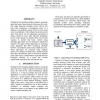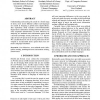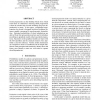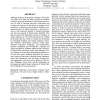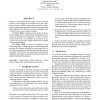ISMIR
2005
Springer
14 years 5 months ago
2005
Springer
Finding the best matching database target to a melodic query has been of great interest in the music IR world. The string alignment paradigm works well for this task when comparin...
ISMIR
2005
Springer
14 years 5 months ago
2005
Springer
Understanding and meeting the needs of a broad range of music users across different cultures and languages are central in designing a global music digital library. This explorato...
ISMIR
2005
Springer
14 years 5 months ago
2005
Springer
Common approaches to creating playlists are to randomly shuffle a collection (e.g. iPod shuffle) or manually select songs. In this paper we present and evaluate heuristics to ad...
ISMIR
2005
Springer
14 years 5 months ago
2005
Springer
Audio-based music similarity measures can be applied to automatically generate playlists or recommendations. In this paper spectral similarity is combined with complementary infor...
ISMIR
2005
Springer
14 years 5 months ago
2005
Springer
This paper describes a method for melody detection in polyphonic musical signals. Our approach starts by obtaining a set of pitch candidates for each time frame, with recourse to ...
ISMIR
2005
Springer
14 years 5 months ago
2005
Springer
Chord progressions are the building blocks from which tonal music is constructed. Inferring chord progressions is thus an essential step towards modeling long term dependencies in...
ISMIR
2005
Springer
14 years 5 months ago
2005
Springer
We present a system for musical genre classification based on audio features extracted from signals which correspond to distinct musical instrument sources. For the separation of...
ISMIR
2005
Springer
14 years 5 months ago
2005
Springer
Although analogue phonograph recordings (LPs) have long shelf lives, there are many reasons for initiating research into proper procedures for their digital preservation. In order...
ISMIR
2005
Springer
14 years 5 months ago
2005
Springer
The focus of this paper is on ENP-expressions that can be used for annotating ENP scores with user definable information. ENP is a music notation program written in Lisp and CLOS...
ISMIR
2005
Springer
14 years 5 months ago
2005
Springer
Music can be described best by music. However, current research in the design of user interfaces for the exploration of music collections has mainly focused on visualization aspec...
